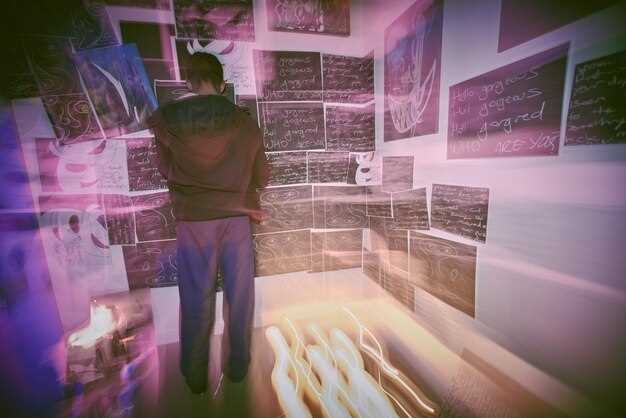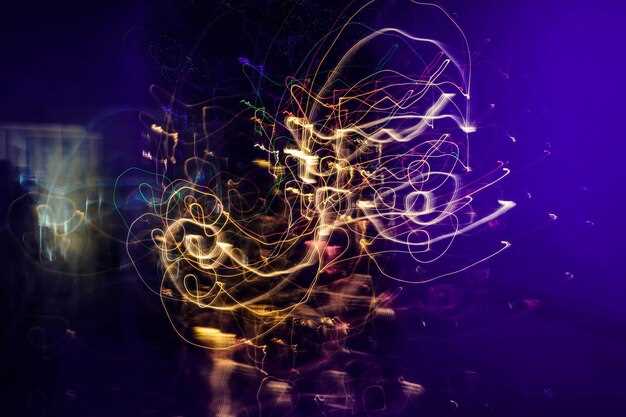Seek an immediate boost in your sound design projects? Focus on integrating AI-driven tools that have streamlined workflows in 2025. Modern sound designers can confidently use software that automates tedious processes like audio cleanup and dynamic range compression. This not only amplifies creativity but also saves countless hours.
Leverage the potential of virtual reality and spatial audio technologies. Implement 3D soundscapes to captivate audiences in immersive environments. By 2025, these technologies have matured, offering tools that enable real-time manipulation of audio for enhanced user experiences. Experiment with spatial audio in augmented reality apps to create rich, interactive sound layers.
Collaborate with interdisciplinary teams, blending expertise in fields like neuroacoustics and psychoacoustics. This approach enhances the emotional impact of your projects. Understanding how sound influences the human brain fosters designs that resonate more deeply with audiences. Researchers have developed models to predict emotional responses to sound, enabling designers to fine-tune their creations.
Stay updated with cloud-based platforms that facilitate seamless collaboration. In 2025, these platforms offer features for real-time sharing of sound libraries and collaborative editing. This improves efficiency in projects spanning multiple teams across different locations, making remote work more productive than ever.
Theoretical Foundations of Modern Sound Design
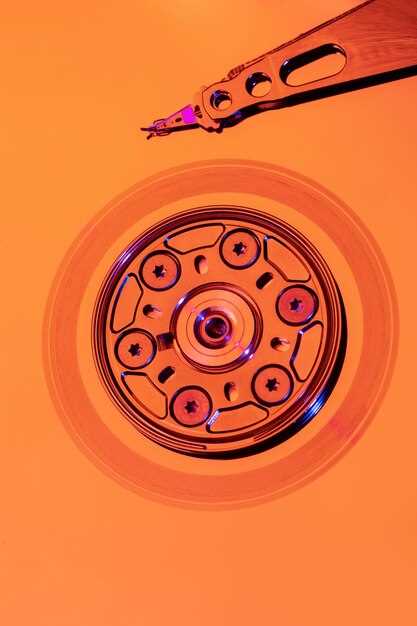
Begin your exploration of modern sound design by understanding the principles of acoustics. Focus on how sound waves interact with environments, materials, and spaces, creating unique auditory experiences. Investigate concepts such as frequency, amplitude, and timbre to grasp how variations in these elements influence perception.
Prioritize psychoacoustics, which examines the psychological responses associated with sound stimuli. Study phenomena like masking, where certain sounds become inaudible due to the presence of other, louder noises. This knowledge allows optimization of audio tracks, ensuring clarity and emotional impact.
Delve into music theory to enrich sound design, exploring scales, chords, and harmonics. Understanding how different musical elements evoke specific emotions enables you to craft soundscapes that resonate deeply with audiences. Harmonize sound design with narrative elements, enhancing storytelling and engagement.
Integrating digital signal processing (DSP) is pivotal for manipulating sound properties. Utilize DSP techniques like equalization, reverb, and compression to refine audio output, tailoring it to specific platforms and environments. Experiment with synthesis methods, such as subtractive, additive, and granular synthesis, to create innovative sounds.
| Concept | Application |
|---|---|
| Acoustics | Optimize sound environments |
| Psychoacoustics | Enhance auditory perception |
| Music Theory | Create emotionally resonant soundscapes |
| Digital Signal Processing | Refine audio fidelity and production |
Understanding Acoustic Properties in Digital Environments
Prioritize the calibration of virtual acoustic spaces by utilizing high-fidelity impulse response recordings. This method captures the unique characteristics of physical environments and allows digital platforms to accurately reproduce them. A key factor is ensuring that the sampling rate matches the intended purpose, with 48 kHz typically offering optimal results for detailed sound reproduction in audiovisual projects.
Implementing real-time sound processing algorithms enhances the user’s auditory experience by adjusting to dynamic changes in the environment. This involves using adaptive filtering techniques, which adjust for varying listener positions and environmental changes to maintain consistent sound quality. Optimize the algorithms for processing efficiency to reduce latency, ensuring seamless audio interaction in virtual spaces.
Incorporate binaural audio techniques to simulate three-dimensional sound environments effectively. By tracking head movements, sound can be spatially oriented to create a more immersive experience. This approach provides clear directional cues for the listener, enhancing realism and presence in digital simulations and virtual reality applications.
Develop an understanding of psychoacoustic principles to refine sound design strategies. Consider the perceptual effects of frequency masking and temporal resolution to enhance audio clarity in high-density soundscapes. By tailoring the auditory output to human hearing perceptual thresholds, one can improve the listener’s engagement and comfort.
Leverage advanced rendering engines capable of simulating acoustic phenomena such as diffraction and reflection. These elements contribute significantly to authenticity and enrich the interaction with virtual spaces. Efficiently distribute computational resources for these complex simulations to maintain performance, especially in resource-constrained environments like mobile applications.
Adopting these strategies will allow sound designers to more effectively manipulate and enhance acoustic properties within digital environments, yielding audio experiences that are both realistic and engaging.
This section delves into the core acoustic principles that inform sound design in virtual spaces, focusing on how these principles adapt in digital formats.
Focus on mastering the foundational acoustic principles by considering the nuances of digital environments, especially for crafting immersive soundscapes in virtual spaces. Here’s how you can adapt effectively:
- Reflection and Reverberation: Utilize digital tools to simulate room acoustics, considering how sound reflects off virtual surfaces. Algorithms can replicate different environments from intimate rooms to vast halls, adjusting decay times and initial reflections for realistic sound experiences.
- Absorption and Diffusion: Leverage the ability to digitally model surfaces that absorb or scatter sound. Balance clarity and lushness by controlling digital diffusion, which can significantly alter how listeners perceive space and sound depth.
- Spatialization: Implement advanced 3D audio techniques, such as binaural or ambisonic audio, which deliver heightened immersion. Accurate spatial cues can convincingly place listeners within a virtual scene, enhancing engagement with content.
- Frequency Response: Be mindful of how virtual environments can alter frequency perception. Tailor sound design to compensate for any digital coloration or attenuation, ensuring a balanced and intended auditory experience.
- Dynamic Range: Manage the dynamics carefully, as virtual spaces may compress or expand dynamic range differently than physical spaces. This control can maintain impact and detail across various devices and environments.
- Auralization: Use auralization techniques in digital environments to preview and refine sound design choices. This predictive modeling can aid in achieving the desired acoustic outcomes before final implementation.
By integrating and adapting these principles within digital frameworks, sound designers can significantly elevate the immersive quality of virtual spaces, offering users a realistic and engaging auditory experience.
Advancements in Psychoacoustics and Their Implications
Leverage the latest psychoacoustic advancements to create immersive soundscapes that resonate with audiences on a profound level. Thanks to cutting-edge research, sound designers can now predict and manipulate how listeners perceive sound, impacting everything from entertainment to healthcare. These developments allow for more nuanced control over things like loudness perception, spatial localization, and emotional response to sound.
Recent studies have shown the potential of 3D audio technology in enhancing spatial awareness. For instance, utilizing ambisonic sound fields can heighten the listener’s sense of presence in virtual reality applications. Such immersion depends heavily on the accurate delivery of sound cues, which psychoacoustics continues to refine.
Consider implementing advanced binaural audio techniques, which simulate how human ears naturally perceive sound from different directions. This not only enhances realism but also allows sound designers to craft experiences that are uniquely tuned to individual listeners’ perceptions.
| Advancement | Application | Outcome |
|---|---|---|
| 3D Audio Technology | Virtual Reality | Enhanced immersion |
| Binaural Beats | Mental Health Apps | Reduced anxiety |
| Dynamic Range Compression | Film Soundtracks | Consistent audio levels |
The fusion of psychoacoustic principles with machine learning algorithms enables predictive modeling of auditory experiences. Machine learning can analyze vast datasets to personalize audio output based on listener preferences, promising more personalized and impactful auditory interactions.
For a more impactful auditory experience, integrate psychoacoustic features directly into the creative process. Whether through sound therapy initiatives or enhanced gaming environments, the ability to tailor soundscapes to human auditory perception offers unprecedented opportunities for innovation and emotional connection.
Explore recent discoveries in how humans perceive sound and their direct application to creating immersive audio experiences.
Apply cutting-edge research into auditory perception by focusing on the brain’s ability to localize sound. This capability stems from how humans discern differences in time, phase, and intensity of sound waves reaching each ear. Use spatial audio techniques like binaural recording to mimic this natural experience, allowing your audience to feel present within a sound environment.
Incorporate the principles of the cocktail party effect, which illuminates how people focus on specific auditory stimuli amidst a cacophony of noise. To captivate listeners’ attention, design audio that uses frequency separation and directional cues, enhancing the clarity and prominence of primary sounds in complex soundscapes.
Leverage the McGurk effect, which demonstrates the interaction between hearing and vision in sound perception. Integrate audio with synchronized visual elements to create cohesive and believable experiences, as the dissonance between what one hears and sees can significantly alter perception.
Emphasize audio dynamics by manipulating loudness, pitch, and rhythm. Research shows that variations in these elements evoke emotional responses and maintain engagement. Tailor your sound design to fluctuate naturally, mimicking the ebb and flow of real environments to deepen immersion.
Finally, incorporate individualized audio experiences by utilizing real-time audio processing technology. This enables a unique auditory journey tailored to each listener’s location, movement, and behavior, making the immersion distinctly personal and profoundly affecting.
Leveraging AI in Sound Synthesis
Utilize AI algorithms to generate complex soundscapes that are difficult to achieve through traditional means. Implement machine learning models like generative adversarial networks (GANs) for creating unique audio textures that adapt in real-time. These models excel at learning from large datasets, allowing sound designers to explore new creative avenues.
Program neural networks to mimic physical sound processes. Train models using audio samples to reproduce intricate sonic details accurately. This method reduces time spent on manual synthesis, enabling designers to focus on refining their projects.
Incorporate AI for parameter automation in sound design software. Intelligent systems can analyze audio inputs and suggest adjustments, taking into account user preferences and project requirements. This approach significantly improves workflow efficiency, providing more time for experimentation.
Experiment with AI-driven modulation techniques to expand sound design possibilities. Algorithms can dynamically alter sound parameters based on environmental inputs or user interaction, creating immersive auditory experiences. This application finds use in gaming, virtual reality, and live performances.
Ensure the continued learning and adaptation of AI systems in sound synthesis. Regularly update models with new data to maintain relevancy and precision. This ongoing enhancement enables designers to continually push the boundaries of what can be sonically achieved.
Examine the role of artificial intelligence in developing new sound synthesis techniques that redefine possibilities for sound designers.
Explore innovative strategies that incorporate artificial intelligence to revolutionize sound design. AI-driven algorithms model complex acoustic environments with precision, creating highly realistic simulations. These advancements empower sound designers to craft immersive soundscapes efficiently, sparking novel creative processes.
- Utilize AI-based neural networks to generate unique audio textures, enabling unprecedented sound exploration.
- Leverage deep learning models that synthesize realistic instrument sounds, minimizing the need for extensive sample libraries.
- Incorporate AI-driven improvisation tools that seamlessly adapt compositions in real-time, enhancing interactive sound experiences.
Sound designers can customize AI tools to cater specific project needs, ensuring creative control remains intact. Open-source platforms facilitate collaboration, allowing designers to fine-tune algorithms and contribute improvements. By leveraging AI, sound design becomes a dynamic field of exploration, with creative possibilities expanding continually.
Historic Evolution and Trends Influencing 2025 Practices
Recognize the impact of technological progress in sound design by examining key historical shifts and trends. Start with the breakthrough of digital audio workstations (DAWs) in the late 20th century, which replaced bulky analog equipment with accessible, user-friendly software. As a result, aspiring sound designers gained unprecedented access to tools that democratized the creative landscape.
Fast forward to recent advancements, note the rising importance of spatial audio. Originally popularized by virtual reality advancements, spatial audio employs multichannel speaker setups to create immersive audio experiences. This trend has grown beyond VR and now influences gaming, film, and live performances by enabling designers to craft 360-degree soundscapes.
- Adaption of AI and Machine Learning: These technologies have transformed sound design by enabling automation in tasks like noise reduction and instrument recognition. They also inspire creative possibilities, generating unique soundscapes through AI-driven composition.
- Environmental Soundscaping: This approach emphasizes sustainable practices by integrating natural sounds into urban areas to promote well-being. Sound designers use bioacoustic data to create harmonious sound environments, influencing architectural and public space planning.
- Influence of Streaming Platforms: As streaming has become the primary mode of content consumption, optimizing sound for various devices is critical. This trend encourages dynamic range compression and tailoring sound profiles to enhance audio clarity and impact across different listening contexts.
Anticipate further integration of virtual and augmented reality technologies. These technologies demand adaptive soundscapes that respond to user interactions in real time. Developing expertise in interactive audio design will prove invaluable for professionals seeking to thrive in this evolving industry by 2025.
Stay informed about the continuous developments in hardware, from high-fidelity headphones to advanced soundbars, which reshape how consumers experience audio. With a thorough understanding of these trends, sound designers can effectively prepare for future challenges and innovations in the field.
A look at how past innovations in sound design inspire current trends and influence future practices, aiming toward 2025.
Utilize the dynamic legacy of analog synthesizers as they offer tactile control and organic sound textures that resonate with modern audiences. Modern sound design tools often incorporate digital replicas of these classic instruments, providing not only historical depth but also creative possibilities for crafting unique soundscapes.
Apply spatial audio techniques first developed in surround sound systems to create immersive experiences. With advancements in virtual and augmented reality, these techniques have evolved into creating 360-degree audio environments, enhancing the listener’s emotional engagement and narrative comprehension.
Explore granular synthesis, a concept from 1950s experimental music, adapted today in sophisticated, user-friendly software. This allows designers to deconstruct and manipulate sound at micro-levels, paving the way for intricate sound textures and innovative auditory experiences in film, gaming, and interactive media.
Draw inspiration from early tape manipulation techniques, such as looping and reversing audio, to develop new experimental methods in music production and live performances. This retro approach can spark creativity when combined with modern digital audio workstations, leading to fresh auditory landscapes.
Leverage machine learning algorithms that trace their roots back to early artificial intelligence experiments, now crucial in automating complex sound design tasks. These algorithms assist in generating realistic ambient noises and predictive soundscapes, reducing workloads and opening resources for creative exploration.
Considering the role of psychoacoustics developed in the 20th century enhances our understanding of sound perception. Implement these findings in creating realistic audio experiences and understanding how specific frequencies and sound structures affect human emotion and behavior. This scientific insight is invaluable as we move towards 2025’s sound design landscape.
By integrating these past innovations and understanding their core principles, sound designers can continue to push the boundaries of what is possible, crafting audio experiences that are at once cutting-edge and deeply rooted in the rich history of auditory exploration.
Practical Applications and Innovations in Sound Design
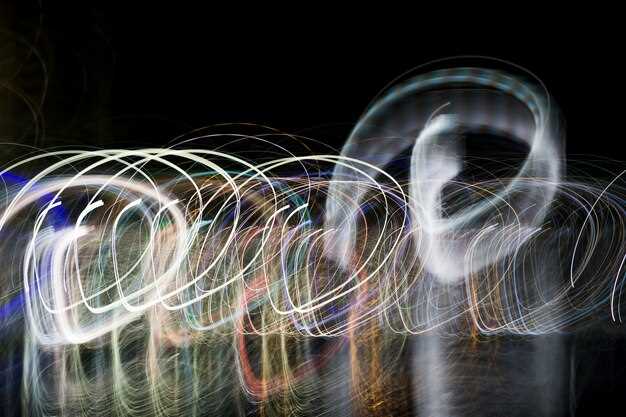
Focus on hybrid soundscapes that blend digital and acoustic elements for enriched auditory experiences. By merging synthesized sounds with organic recordings, you enhance the listener’s engagement, creating immersive environments in virtual reality applications.
Incorporating AI-driven tools in your workflow can streamline sound editing and mixing processes. Utilize machine learning algorithms to generate adaptive soundtracks that respond dynamically to user interactions. This is particularly effective in interactive installations and video games, where sound adapts in real-time to players’ actions.
Leverage binaural audio to craft three-dimensional sound experiences that replicate real-world listening environments. This technique is especially useful in podcasts and virtual storytelling, allowing for precise positioning of sounds to draw listeners into the narrative.
Experiment with granular synthesis techniques to deconstruct and transform audio samples into entirely new textures. This approach can add an innovative edge to cinematic sound design and music production, offering unique auditory experiences tailored to specific moods or themes.
Utilize cloud-based collaboration platforms to work seamlessly with teams across the globe, allowing for real-time feedback and iteration on sound projects. This not only boosts productivity but also incorporates diverse creative inputs into the sound design process.
Explore the integration of sound design in augmented reality applications to enhance physical spaces with interactive audio elements. By embedding sounds that react to user movement, you create layers of engagement, transforming everyday environments into dynamic soundscapes. These applications span across sectors including entertainment, education, and marketing, offering versatile solutions for consumer engagement.
Video:
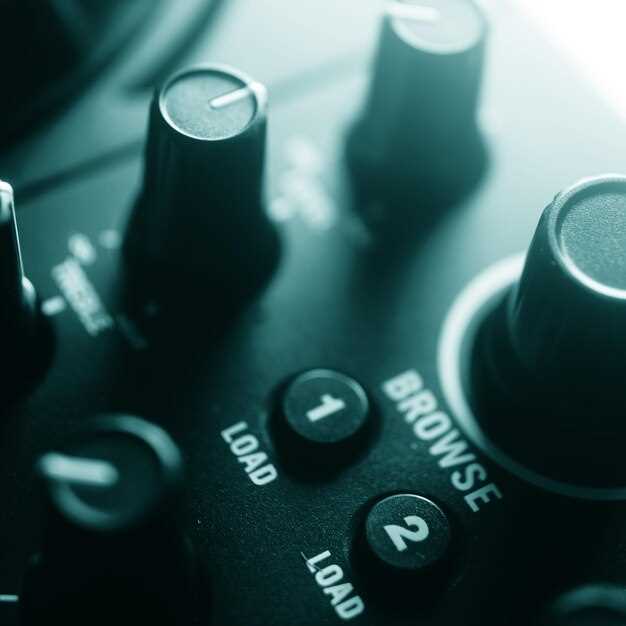
Sound Design for Beginners (A FULL COURSE)
Sound Design for Beginners (A FULL COURSE)
Q&A:
How has sound design evolved and what practical changes can we expect in 2025?
Sound design has seen significant advancements with the integration of immersive technologies like virtual reality and artificial intelligence. By 2025, we anticipate the widespread use of AI in automating repetitive tasks, allowing sound designers to focus more on creativity. Additionally, spatial audio technologies are expected to provide more realistic audio experiences, benefiting industries such as gaming, film, and virtual reality. These advancements will make sound design more accessible and engaging for both creators and consumers.
What role do artificial intelligence and machine learning play in modern sound design?
Artificial intelligence and machine learning play crucial roles in modern sound design by identifying patterns and generating new soundscapes more efficiently. AI can analyze vast audio data quickly, suggesting enhancements or generating new sounds based on certain parameters. Machine learning algorithms help refine these processes over time, enhancing accuracy and creativity while providing sound designers with innovative tools to experiment and develop unique audio experiences.
Can you explain the significance of spatial audio technologies in 2025’s sound design?
Spatial audio technologies create immersive audio experiences by simulating a three-dimensional sound environment. This is particularly important for industries like virtual reality, where realistic audio enhances user engagement. In 2025, spatial audio is expected to be more prevalent, providing listeners with a more authentic experience by accurately recreating how sound is perceived in real life, further blurring the lines between digital and physical worlds.
How do emerging technologies impact the workflow of sound designers today?
Emerging technologies streamline sound designers’ workflows by automating manual processes, improving collaboration tools, and offering real-time editing capabilities. These innovations help reduce the time and effort required for creating complex soundscapes, allowing designers to produce higher-quality work more efficiently. Additionally, cloud-based software solutions enable teams to work collaboratively across different locations, enhancing the overall production process.
In what way are ethical considerations becoming more prominent in the field of sound design?
As technology advances, sound designers must navigate ethical considerations related to privacy, data usage, and cultural sensitivity. The use of AI in sound design raises questions about intellectual property and authorship, while immersive experiences necessitate respect for diverse cultural backgrounds in the sounds used. Designers are increasingly aware of these issues, striving to maintain ethical standards by developing transparent practices and promoting inclusivity in their work.
What are the key trends in sound design that are expected to emerge by 2025?
By 2025, sound design is anticipated to heavily integrate with advancements in artificial intelligence and machine learning. This will allow for more dynamic and adaptive audio environments, where soundscapes can change in real-time based on user interactions or surroundings. Additionally, immersive audio technologies, such as spatial audio and binaural sound, are expected to become more prevalent, offering listeners a more realistic and engaging experience. The growing popularity of virtual and augmented reality will also drive innovation in sound design, requiring designers to create audio that enhances digital environments while ensuring seamless integration with visual elements. Finally, sustainability is likely to become a focal point, with sound designers seeking environmentally-friendly production practices and materials.
How will sound design adapt to the challenges of incorporating sustainability practices?
Sound designers are increasingly recognizing the importance of sustainability and are exploring various methods to reduce the environmental impact of their work. One approach is to use digital tools and software that minimize the need for physical materials, thereby lowering the carbon footprint. Additionally, sound designers are looking into the use of eco-friendly materials for any physical components they might use, such as equipment casings or installation setups. There is also a push towards recycling and upcycling in sound design projects, where old equipment is refurbished or repurposed instead of being discarded. Finally, collaboration with other disciplines, such as architecture and urban planning, is seen as a way to develop soundscapes that are energy-efficient and environmentally conscious, while still delivering high-quality audio experiences.


